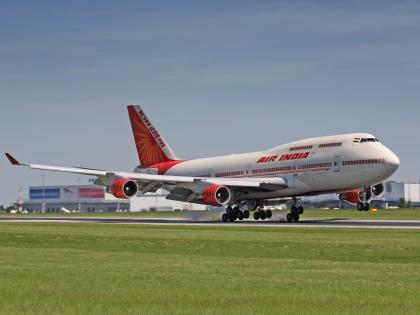The proposed Chandrapur Greenfield Airport, to be developed in Murti and Vihirgaon villages of Rajura tehsil in Maharashtra’s Vidarbha region, represents a key strategic initiative to enhance regional air connectivity and stimulate economic development. The project, led by the Maharashtra Airport Development Corporation (MADC), is envisioned as a critical transportation hub for eastern Maharashtra, supporting both passenger and cargo movement.
Project Scope and Phasing
Designed to be implemented in two phases, the project initially includes a 2,000-meter runway capable of accommodating turboprop aircraft such as the ATR 72 and Bombardier Q400. The second phase will extend the runway to 3,000 meters, enabling operations of narrow-body jets like the Airbus A320, thereby opening the region to domestic and potentially international air traffic.
The Airports Authority of India (AAI) granted site clearance in 2018, and the Maharashtra government approved the requisite funding for land acquisition. The site’s strategic proximity to mining, industrial, and forested regions underscores its importance for multi-sectoral growth, including tourism, manufacturing, and logistics.
Regulatory and Environmental Challenges
Despite early progress, the project has encountered substantial delays due to regulatory hurdles and environmental assessments. The proposed site lies within a critical wildlife corridor that connects the Tadoba-Andhari Tiger Reserve, Chaprala Wildlife Sanctuary, and the proposed Kanhargaon Wildlife Sanctuary.
Reports from the Wildlife Institute of India (WII) highlight potential disruptions to tiger movement and broader ecosystem connectivity. In December 2022, the Forest Advisory Committee (FAC) under the Ministry of Environment, Forest and Climate Change recommended deferring the project and called for a reassessment of both the site location and the project’s financial feasibility.
Infrastructure Planning and Mitigation Strategies
To address the environmental concerns, mitigation strategies have been proposed. These include:
- Realignment of airport boundaries to avoid ecologically sensitive areas.
- Restoration of 17 forest patches to sustain wildlife movement.
- Adoption of low-noise, low-light infrastructure design.
- Construction of underpasses and overpasses for animal crossings.
While these measures are being considered in the planning phase, their effectiveness remains under evaluation by both environmental and aviation authorities.
Strategic Implications and Future Outlook
From an infrastructure standpoint, the Chandrapur Greenfield Airport is poised to act as a catalyst for regional development. It offers potential benefits in terms of connectivity, economic integration, and urbanization of hinterland regions. The project also aligns with broader policy goals under the UDAN (Ude Desh ka Aam Naagrik) scheme and the National Infrastructure Pipeline (NIP).
However, the project’s viability hinges on successful coordination between urban planners, environmental regulators, and aviation authorities. The long-term sustainability of the airport depends not just on its economic feasibility, but also on its ability to coexist with one of India’s most sensitive ecological landscapes.
Conclusion
The Chandrapur Greenfield Airport reflects the dual imperatives of infrastructure growth and environmental stewardship. For the project to move forward, stakeholders must engage in integrated planning, guided by both developmental objectives and ecological constraints. Its outcome will set a precedent for similar infrastructure initiatives proposed in biodiversity-rich zones across the country.
Frequently Asked Questions (FAQs) on the Chandrapur Greenfield Airport
What is the Chandrapur Greenfield Airport project?
The Chandrapur Greenfield Airport is a proposed aviation infrastructure project aimed at developing a new airport near Murti and Vihirgaon villages in Rajura tehsil, Chandrapur district, Maharashtra. The project is led by the Maharashtra Airport Development Corporation (MADC).
What is the purpose of the project?
The airport is intended to enhance regional air connectivity, boost economic development, promote tourism, and facilitate industrial growth in eastern Maharashtra.
What is the current status of the project?
Although the Airports Authority of India approved the site in 2018 and land acquisition funding was sanctioned, the project is currently on hold due to environmental concerns and a deferral by the Forest Advisory Committee (FAC) in December 2022.
Why has the project been delayed?
The proposed site lies in a critical tiger corridor, connecting the Tadoba-Andhari Tiger Reserve, Chaprala Wildlife Sanctuary, and the proposed Kanhargaon Wildlife Sanctuary. Environmental experts and the Wildlife Institute of India (WII) have raised concerns about habitat fragmentation and disruption to tiger movement.
What aircraft will the airport support?
In its first phase, the airport will support turboprop aircraft like the ATR 72 and Bombardier Q400. In the second phase, with a runway extension to 3,000 meters, it will accommodate narrow-body jets such as the Airbus A320.
How will the airport benefit the region?
Improved air connectivity to Nagpur, Mumbai, and other cities
Boost to tourism in Tadoba and nearby wildlife sanctuaries
Support for industrial and mining sectors
Job creation and economic upliftment in the Vidarbha region
Who are the key stakeholders in the project?
Maharashtra Airport Development Corporation (MADC) – project proponent
Airports Authority of India (AAI) – technical support and site clearance
Ministry of Environment, Forest and Climate Change (MoEFCC) – regulatory authority
Wildlife Institute of India (WII) – environmental assessment
Local communities and environmental NGOs – public stakeholders
What mitigation measures have been proposed?
To minimize ecological disruption, the WII has suggested:
Realignment of the airport boundary
Restoration of forest patches to maintain corridor integrity
Wildlife underpasses and overpasses
Noise and light pollution controls
Is there an alternative site under consideration?
The Forest Advisory Committee has recommended exploring non-forest sites to avoid interference with critical wildlife corridors. However, no alternative has been finalized yet.
What is the future of the project?
The future depends on regulatory clearances, environmental assessments, and potential site relocation. The state government continues to advocate for the project, but its progress will depend on finding a sustainable and compliant solution.



